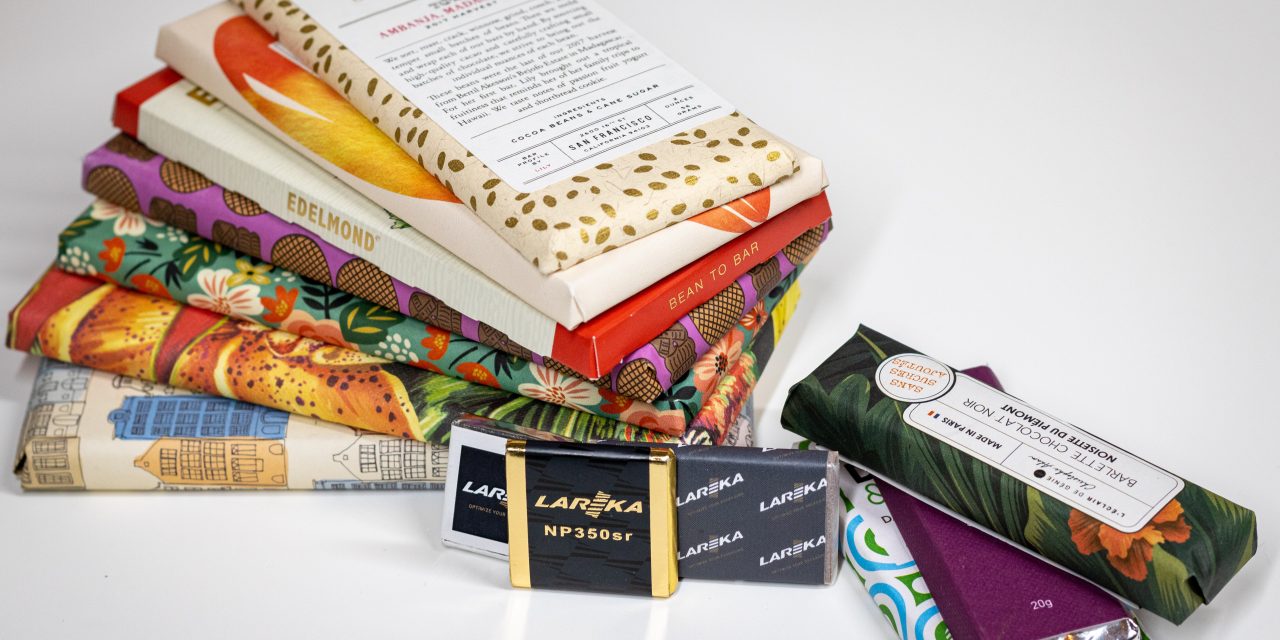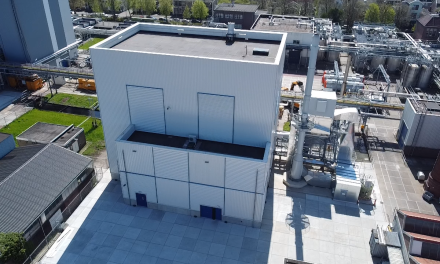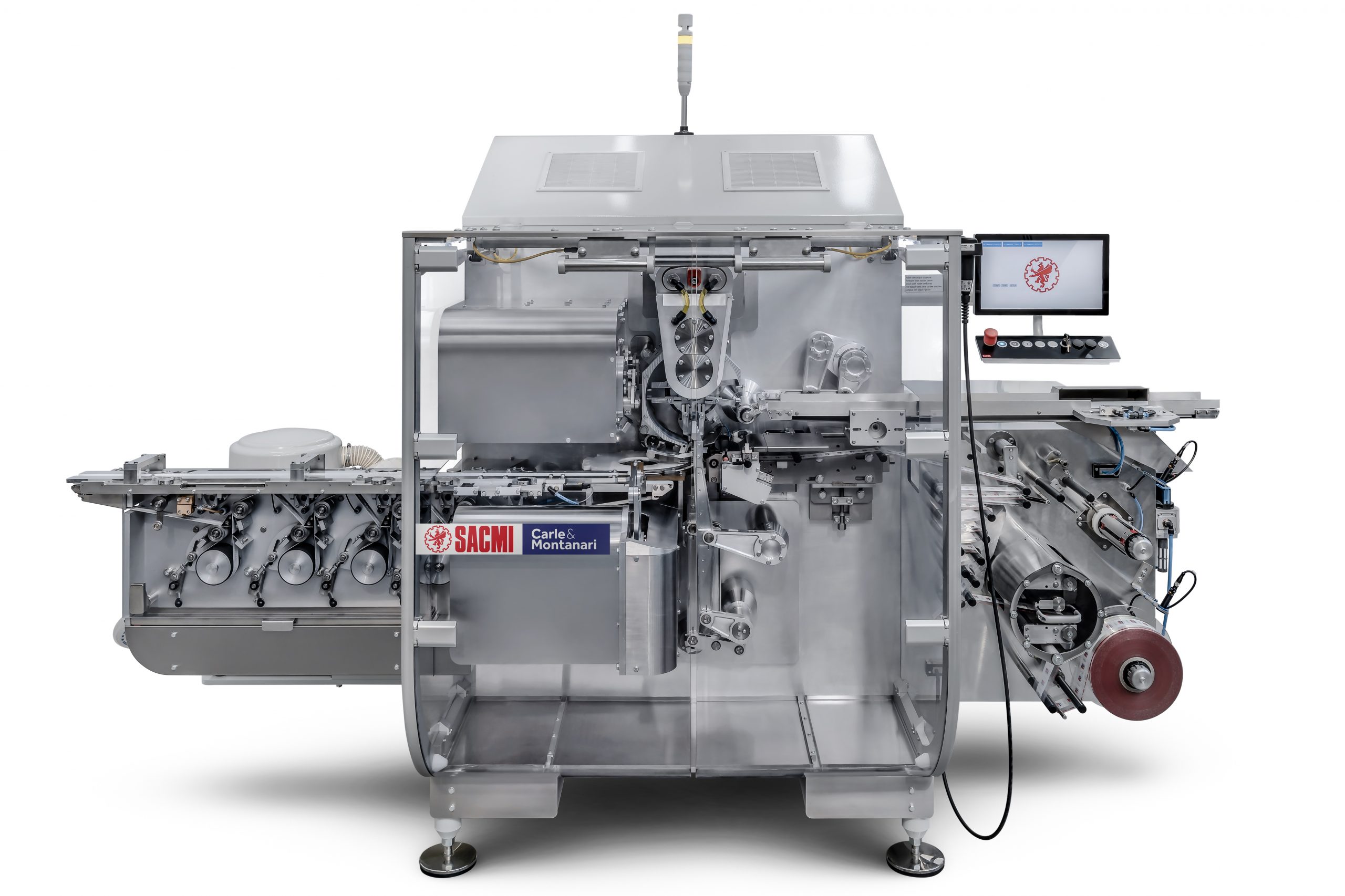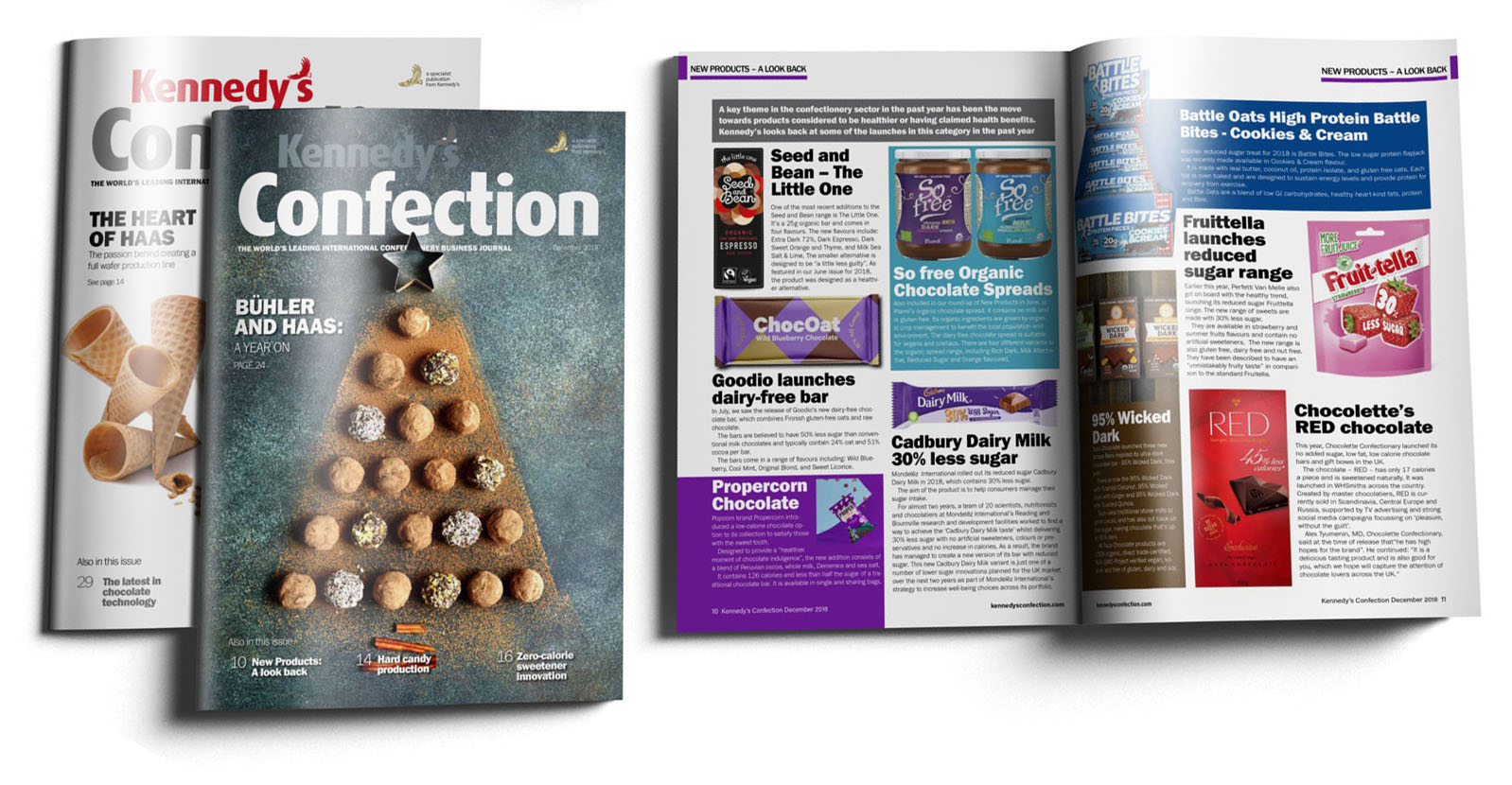When it comes to making a move to more sustainable packaging options there are many challenges that need to be overcome to ensure that the end result is truly a more sustainable solution. Suzanne Callander reports.
There can be no question that too much plastic is being produced and disposed of worldwide. Plastic production has increased exponentially in recent years – from 2.3 million tonnes in 1950 to 448 million tonnes in 2015. This figure is expected to double again by 2050. Some plastic materials can take up to 400 years to decompose.
Most consumers are unsure about which choices they should be making to ensure they shop in an environmentally-friendly manner. And they are not alone – according to Gerhard Schubert many confectionery manufacturers feel the same way. As a result, packaging is still entering the market that, although well-intentioned, is more harmful to the environment than beneficial.
There are also many different opinions currently circulating about what constitutes sustainable packaging while the pressure on confectionery producers to offer more sustainable packaging is growing. To help producers make the most suitable choices, Gerhard Schubert offers packaging design and development as a service, which takes sustainability into account, in addition to other vital considerations such as product safety and efficient material handling by the packaging equipment.
When seeking a suitable sustainable packaging solution for existing products or for new product launches it certainly makes good sense to speak to specialists in packaging development. Manufacturers of packaging equipment should have a good understanding about the different packaging materials that are available and how they can be made to work efficiently and effectively.
“You must always remain realistic,” says Valentin Köhler, a packaging developer at Schubert. “For confectionery producers, sustainability will be just one consideration amongst many. “Competition is high and issues such as visibility at the point-of-sale (POS), reliable procurement and compatibility with common transport systems all also have a key role to play. The trick is to consider all these needs equally in order to find the best solution – one that requires as few compromises as possible.”
As noble as the desire for sustainability may be, the most important task of packaging is still to provide an effective barrier function between product and environment. Its main purpose is to protect the product through both transport and storage, right up until consumption. “The most ecological packaging is of no use if it can no longer guarantee to perform its protective function,” warns Valentin. He also advises against greenwashing – the use of packaging that claims to be sustainable but cannot deliver on the promise. “If the barrier function cannot be ensured in any other way, we would still prefer to recommend a pure plastic film if there is any doubt. After all, in many cases this material can also be recycled – if it is disposed of correctly,” he says.
Sustainability and efficiency
Hosta provides a good example of how sustainability and economic efficiency can be successfully combined. The long-established Franconian company is best known for Nippon, its puffed rice product range. Schubert was brought in to help create a new approach to packaging the product. The aim was to optimise the packaging design in terms of both sustainability and economic efficiency. Pick & place robots enabled the developers to shorten the plastic trays by 10mm. Thanks to this optimisation, the film repeats of the flowpacks could also be reduced by 6mm. This helped save packaging material and therefore costs in the long run.
The carton was also reworked and now consists of a single flat blank with a lid and it is no longer made up of three different parts. Taken together, the improved packaging yields more savings potential – the carton footprint could be reduced, which provided room for nine instead of eight boxes per layer on a shipping pallet. The bottom line was a big cost saving for Hosta – not only did it save on packaging material, but also on truck journeys – helping to reduce its carbon footprint.
Many other confectionery brand owners are now also seeking out new processes and materials in an ongoing effort to create more sustainable packaging solutions, with producers such as Mars Wrigley, Nestlé and Ferrara, for example, pledging to use only sustainable packaging by 2025.
Flexible solutions
When considering a change of packaging it is also vital to choose the right machinery to help reduce waste, drive greater efficiency, increase productivity, and improve recyclability, all within a holistic sustainability strategy.
“Flexibility is no longer a luxury but is a requirement in the consumer-packaged goods industry (CPG) industry,” explains Timo Kollmann, Managing Director at Hugo Beck. “The need for alternative, sustainable materials require machines which can handle everything from recyclable films made from mono-material or recycled content, through to paper-based packaging.”
Hugo Beck, for example, offers a horizontal flowpack machine that can be easily adjusted to process new packaging materials with short changeover times and can cope with many different products and dimensions.
“Minimising the use of packaging material and waste is a key obligation across all food production sectors,” continues Timo. According to a recent report from YouGov, as of 2019 46% of the British population felt guilty about the amount of plastic they used and 82% were actively trying to reduce the amount they use. “Considering this shift in consumer mindset, confectionery manufacturers should be looking for machine technology which can both minimise the use of resources and future-proof the user.” Hugo Beck has developed its packaging solutions to ensure ease of configurability to ensure flexibility. It has also been working hard to help reduce packaging materials consumption through tighter packaging and by enabling its equipment to work with thinner packaging and shrink film materials.
Consumer demand
A 2020 European study on consumer preferences for packaging revealed that almost 70% of respondents were actively trying to reduce their use of plastic packaging.
This report highlighted that the market for flexible packaging – the primary packaging of products needed to change and as a result many confectionery brand owners have been switching to the use of more sustainable materials – such as recyclable mono-materials – and also switching to packaging processes designed to handle these materials.
When considering switching to sustainable packaging materials it is still vital to ensure the quality of the end product. Changing to more sustainable materials also cannot come at the expense of more material jams, tears, or poor-quality seals. This would only result in increased waste, which reduces an organisations sustainable credentials and defeats the object of the material change for a more sustainable product!
Theegarten-Pactec points out that the switch to mono-materials for primary packaging can be a challenge to implement, especially when it comes to packing delicate chocolate products.
Traditionally, chocolate bars have been packaged using composite materials which can be easily packaged by fold wrapping and do not require any additional securing of the packaging by sealing or glue. However, the composite materials employed are not recyclable and so do not meet consumers demand for more sustainable packaging. Unfortunately, recyclable mono-materials often have poor dead-fold properties which requires an additional packaging step to close and fix after folding – either by sealing or with the aid of glue.
The problem with sealing chocolate bars, however, is that an aluminium paper laminate material is required to protect the delicate chocolate from the heat of the sealing tool.
To solve this conundrum, and eliminate the need for the second packaging layer, Theegarten-Pactec has developed a new sealing technology designed to be located directly after the wrapping or packaging station. It employs negative pressure that causes the package to be sucked onto the sealing stamp with no direct contact between the packaging and the product during the sealing process. The heat needed for the sealing process is distributed evenly over the entire sealing surface, ensuring that there are no pressure marks or other damage to the chocolate. Active cooling of the environment ensures additional product safety. After sealing for around 50 milliseconds, the contact between the packaging material and the sealing jaw is terminated and sealing seam only comes into contact with the chocolate again after it has sufficiently cooled.
The best packaging…
During a visit to the Biofach exhibition in Germany a few years ago, Ruben Taks, International Sales Engineer at Lareka, heard the phrase ‘the best packaging is no packaging’ which made him think. “Whilst this is technically true, a world without packaging is a utopia, especially in the world of confectionery,” he says. The reality is that packaging remains a necessity. However, there are now many initiatives under way to develop better, more environmentally friendly and sustainable packaging and packaging materials.
Lareka is keen to play its part in this endeavour. “We are constantly monitoring the market for new sustainable materials for the automated wrapping of artisan chocolate. We are in direct contact with packaging material suppliers the world over and test any material with potential for automated wrapping on our machines,” explains Ruben. “There are three things we look out for in our hunt for the optimal packaging material – sustainability, good barrier properties and a match with the client’s brand identity. Unfortunately, there is no guaranteed formula for success – the ideal balance between these three factors will vary for each project and so we continue to proactively test sustainable materials on our machines.”
Alternatives to the traditional aluminium and aluminium paper laminate that Lareka has tested on its machines include cellophane, glassine paper, cellophane paper laminate, PE-coated paper, water-soluble film made from starch, water-soluble film made from milk proteins, and most recently, paper coated with a water-soluble milk-protein film. “We are particularly optimistic about the latter sustainable alternative which is a material that boasts good fat and gas barrier properties and is highly compatible with our machines,” says Ruben. “This sustainable alternative can also be composted at home and is 100% recyclable.”
Ruben went on to point out another important angle on the sustainability issue, which is less discussed – this relates to the perception of the consumer. “We advise our confectionery clients to approach packaging from a consumer perspective, assuming that consumers do not have the same level of understanding of materials that they do. Take cellophane packaging, for instance. It is compostable and therefore, sustainable. But if the consumer is not aware of this and thinks it is a kind of plastic, it can be negatively perceived and end up in the wrong recycling stream,” he said. “The solution is simple but vital – always communicate with the consumer!”
100% recyclable packaging for Sea Shells
Belgian chocolatier, Guylian has recently unveiled new, more sustainable packaging for its Sea Shells brand of praline filled chocolates.
It has taken two big steps to ensure 100% recyclability of its packaging. These steps include the removal of the traditional plastic windows from its gift boxes and the replacement of brown trays, to hold the chocolates, with clear trays which have had all dyes and carbon removed, making them easier for recycling centres to handle.
Commenting on the new packaging, Tom Snick, CEO at Guylian, says: “This year will see many exciting changes in store for Guylian. From an improved flavour profile to our pioneering sustainability initiatives, and a fresh and luxurious new look design.”
Guylian has also stated that the 800 million chocolates it produces annually are now made entirely with a zero-carbon footprint.

Editorial contact:
Features Editor: Suzanne Callander scallander@kennedys.co.uk
Editor: Kiran Grewal kgrewal@kennedys.co.uk







